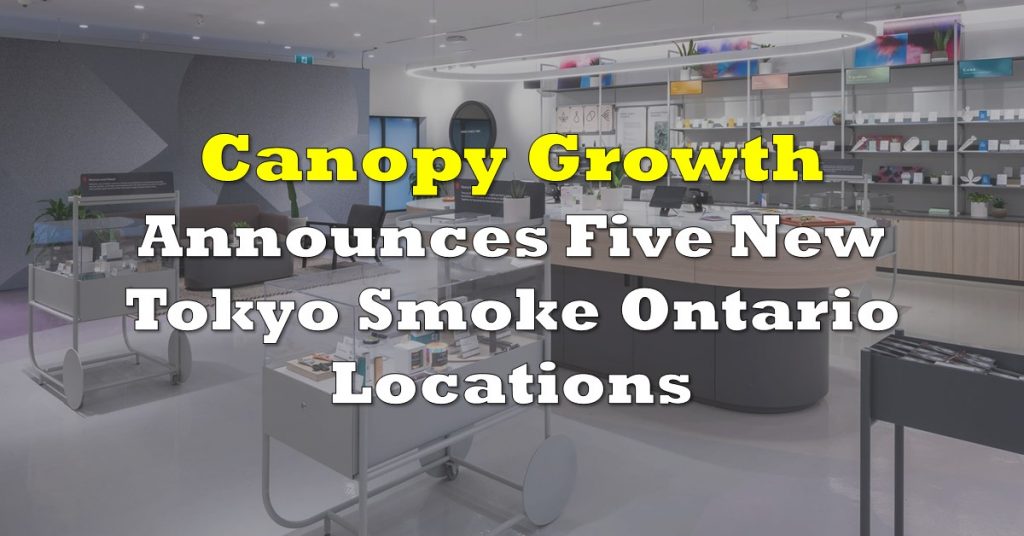In what some might call an inevitable conclusion, Tokyo Smoke, once a darling of Canada’s cannabis retail industry, has filed for protection under the Companies’ Creditors Arrangement Act (CCAA). This move paints a picture of a company that overplayed its hand in a market it clearly misunderstood.
Once touted as a premium cannabis retailer, the firm is now struggling to keep its head above water in a market it hoped would stay restricted and lucrative—but didn’t.
Business model built on wishful thinking
Tokyo Smoke’s collapse should come as no surprise to those familiar with its flawed business model. The company was banking—quite literally—on a highly restricted licensing regime in Ontario and other provinces, where a limited number of licenses would allow it to dominate as a premium brand.
According to their own filings, Tokyo Smoke’s retail strategy was “premised on the existence and growth of a premium cannabis market in Canada in circumstances where access to retail licenses was highly restricted”.
But the market had other plans. Ontario, the company’s primary market, transitioned to an open licensing system, resulting in an explosion of retail cannabis stores. The number of cannabis retail licenses in Ontario ballooned from fewer than 100 to over 1,600 in just a few years.
This move flooded the market with competitors, making it “impossible” for Tokyo Smoke to sustain its “premium” pricing and unique market position. It’s almost as if they believed the government would continue to protect their profits indefinitely.
Tokyo Smoke which was a Cannabis retailer in Canada once purchased by $CGC $WEED for $250M declared bankruptcy today.
— Betting Bruiser (@BettingBruiser) August 28, 2024
This is why they said they couldn’t cut it in todays market: pic.twitter.com/adypodRFDr
Financially sinking
As the market became saturated, Tokyo Smoke’s financials began to unravel. Despite its lofty ambitions, the company’s assets now pale in comparison to its mountainous liabilities.
As of June 30, 2024, Tokyo Smoke reported assets worth $148.2 million against liabilities totaling a staggering $237.4 million. This translates to a deficit of approximately $89.1 million. Part of those liabilities are attributed to the Bank of Montreal, which is owed $38.6 million—a debt secured by Tokyo Smoke’s assets.
But the financial missteps don’t stop there. Tokyo Smoke incurred a net loss of $29.3 million for the fiscal year ending June 30, 2024. While it’s easy to point to the oversupply and market competition as causes, perhaps the more pressing question is why a company of this size and supposed prestige couldn’t better navigate a well-known market shift.

Grey market blues
While Tokyo Smoke was busy trying to maintain its premium image, the company claims it was blindsided by the thriving cannabis grey market in Canada. Estimated to be worth between $2 to $4 billion annually, the grey market continues to siphon off significant revenue from licensed retailers.
According to the company, this unregulated market “disproportionately impacts licensed retailers with legitimate operations.”

Faced with dwindling revenues, Tokyo Smoke is now scrambling to save what little it can. The company plans to shutter approximately 29 underperforming locations across Canada, leaving about 167 stores still in operation. The closures are part of a broader restructuring strategy aimed at reducing costs and “right-sizing” the business, as the company so optimistically puts it.
Meanwhile, the company is still clinging to its online platform and loyalty program, The High Roller Club, as if these initiatives might somehow pull them out of their financial tailspin.

In its CCAA filing, Tokyo Smoke indicated that one of its issues is that all cannabis products in Ontario are sourced from the same regulated wholesalers, meaning there is almost no differentiation between what one store sells versus another. This lack of differentiation has led to price wars, which in turn have slashed the margins that Tokyo Smoke once relied on to sustain its premium brand.
The “rescue plan”
As part of its restructuring efforts, Tokyo Smoke has secured Debtor-In-Possession (DIP) financing to maintain operations during the CCAA process. The financing, provided by TS Investments, totals $8 million, including an initial advance of $3.3 million. This financing is secured by a DIP lender’s charge that will rank behind BMO’s existing security interests but above all other claims.
The company has also proposed to implement a Sales and Investment Solicitation Process (SISP), under which it will seek out potential buyers or investors. This process includes a stalking horse bid, setting a floor price to ensure any sale maximizes the return for stakeholders.
Information for this briefing was found via the sources mentioned. The author has no securities or affiliations related to this organization. Not a recommendation to buy or sell. Always do additional research and consult a professional before purchasing a security. The author holds no licenses.









